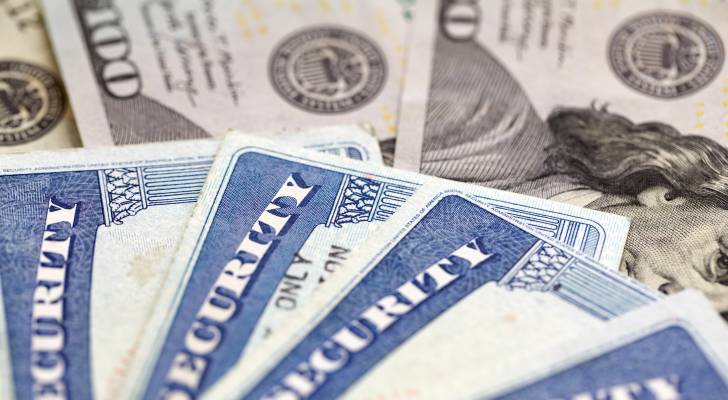
Georgia State University professor David Maimon, head of the school’s evidence-based cybersecurity research group, says he’s found Social Security accounts for sale by scammers online.
“You can see the name, date and the balance,” he told Channel 2 Action News in a story published March 24. “The whole point of the scam is to try to take over those individuals’ Social Security payments.”
Don’t miss
- I’m 49 years old and have nothing saved for retirement — what should I do? Don’t panic. Here are 5 of the easiest ways you can catch up (and fast)
- Gain potential quarterly income through this $1B private real estate fund — even if you’re not a millionaire. Here’s how to get started with as little as $10
- Car insurance premiums could spike 8% by the end of 2025 — thanks to tariffs on car imports and auto parts from Canada and Mexico. But here’s how 2 minutes can save you hundreds of dollars right now
Maimon shared a video with the local broadcaster, which was described as showing access to an account for sale and revealing a beneficiary’s personal data, including the amount of their monthly payment — in this case $1,855.30.
So, how exactly does this scam work, and what can Americans do to protect their benefits?
How does the scam work?
How can someone benefit from purchasing access to a stranger’s Social Security account? According to Maimon, it’s disturbingly simple.
"They will just go to the Social Security Administration website, will change the details there and funnel the money to the new — and fake — John Doe account," Maimon explained.
Scammers can gain access to online accounts through various means, including stolen login credentials and successful phishing attempts.
It’s the type of fraud the Trump administration says it’s been trying to prevent. A new Social Security Administration (SSA) policy, set to roll out April 14, aims to make identity theft harder by requiring in-person verification for those unable to apply for services online. Previously, you could verify your identity by phone. But there are reports the SSA is backing off from these changes.
Critics of the policy argued it would do more harm than good — especially since the previously SSA announced plans to cut approximately 7,000 of 57,000 (12%) of jobs.
Read more: Want an extra $1,300,000 when you retire? Dave Ramsey says this 7-step plan ‘works every single time’ to kill debt, get rich in America — and that ‘anyone’ can do it
Protect your Social Security account
If you’re interested in protecting your Social Security account from fraud, here are some steps you can take.
Regularly check your account
If you have a “my Social Security” account, review your earnings history, personal information and payment status often. Any unfamiliar changes could be a sign your account has been compromised. Consider printing your benefits report so you can easily spot changes.
Don’t click on suspicious links
Phishing emails and text messages from people posing as the SSA may urge you to “verify” your identity by logging into your account using a supplied link. Don’t take the bait — always access your account through the official site and never enter personal details through a link given to you out of the blue.
Use two-factor authentication when possible
The SSA allows users to enable two-factor authentication (sometimes called multi-factor authentication) to access their accounts for added security. When turned on, you’ll need to enter a code sent to your phone or email address in addition to your username and password. This offers additional protection from account takeovers.
Don’t give cash to protect assets
Another common scam involves in-person visits from someone claiming to be law enforcement. Scammers pretending to be police or government agents may claim your assets are “at risk” and urge you to convert money into gold or gift cards for safekeeping. This is a classic scam. Real agencies will never ask for payment or offer protection this way.
Stay informed on new scams
Criminals thrive in times of change, and SSA-related scams are evolving. Sign up for fraud alerts, read SSA security updates and follow trusted consumer protection sources, such as the Federal Communications Commission (FCC).
Talk to a trusted person before making changes
Some scammers count on urgency and isolation to pull off their fraud. If you’re being pressured to do something like change your direct deposit information or respond to an unexpected notice, talk to a friend or family member first.
Being careful and proactive is the best defense against Social Security scams, and it could mean the difference between a secure retirement and financial chaos.
What to read next
- Thanks to Jeff Bezos, you can now become a landlord for as little as $100 — and no, you don’t have to deal with tenants or fix freezers. Here’s how
- Here are 5 ‘must have’ items that Americans (almost) always overpay for — and very quickly regret. How many are hurting you?
- Trump warns his tariffs will spark a ‘disturbance’ in America — use this 1 dead-simple move to help shockproof your retirement plans ASAP
This article provides information only and should not be construed as advice. It is provided without warranty of any kind.